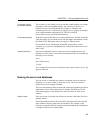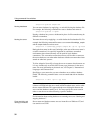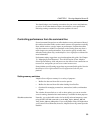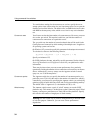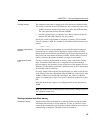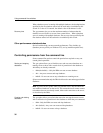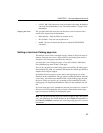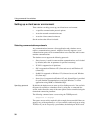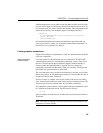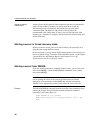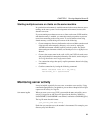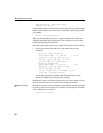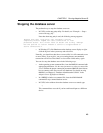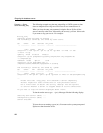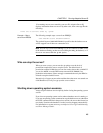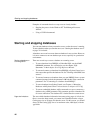
CHAPTER 2 Running Adaptive Server IQ
39
Additional parameters can be added to tune the behavior of the server for each
protocol. For example, the following command line instructs the server to use
two network cards, one with a specified port number. This command must be
entered all on one line, even though it appears on multiple lines here.
asiqsrv12
-x "tcpip(MyIP=192.75.209.12:2367,192.75.209.32)"
-gm 10 -gp 4096
path\asiqdemo.db
For detailed descriptions of network communications parameters that can
serve as part of the
–x switch, see “Network communications parameters” in
the Adaptive Server IQ Reference Manual.
Limiting inactive connections
Adaptive Server IQ uses two parameters, -tl and -ti, to determine when it should
close user connections.
Setting the default
network timeout
A liveness packet is sent periodically across a client/server TCP/IP or IPX
communications protocol to confirm that a connection is intact. If the server
runs for a liveness timeout period (default 2 minutes) without detecting a
liveness packet, the communication is severed. The server drops any
connections associated with that client. There is no warning. All activity that
falls within any open transaction is rolled back.
The
–tl switch on the server sets the liveness timeout, in seconds, for all clients
that do not specify a
–tl switch when they connect. Liveness packets are sent at
an interval of the (liveness timeout)/4.
You may want to set a higher value for this switch at the server level. Many
users, especially those who have used earlier versions of Adaptive Server IQ,
will not expect to be disconnected after only 2 minutes of inactivity.
Try setting the liveness timeout to 300, together with the recommended value
for
–ti discussed in the next section. Set this switch as follows:
-tl 300
If this value does not work well, try -tl 1200, which sets the liveness timeout to
20 minutes.
Note Users who are running a client and server on the same machine do not
experience a liveness timeout.



